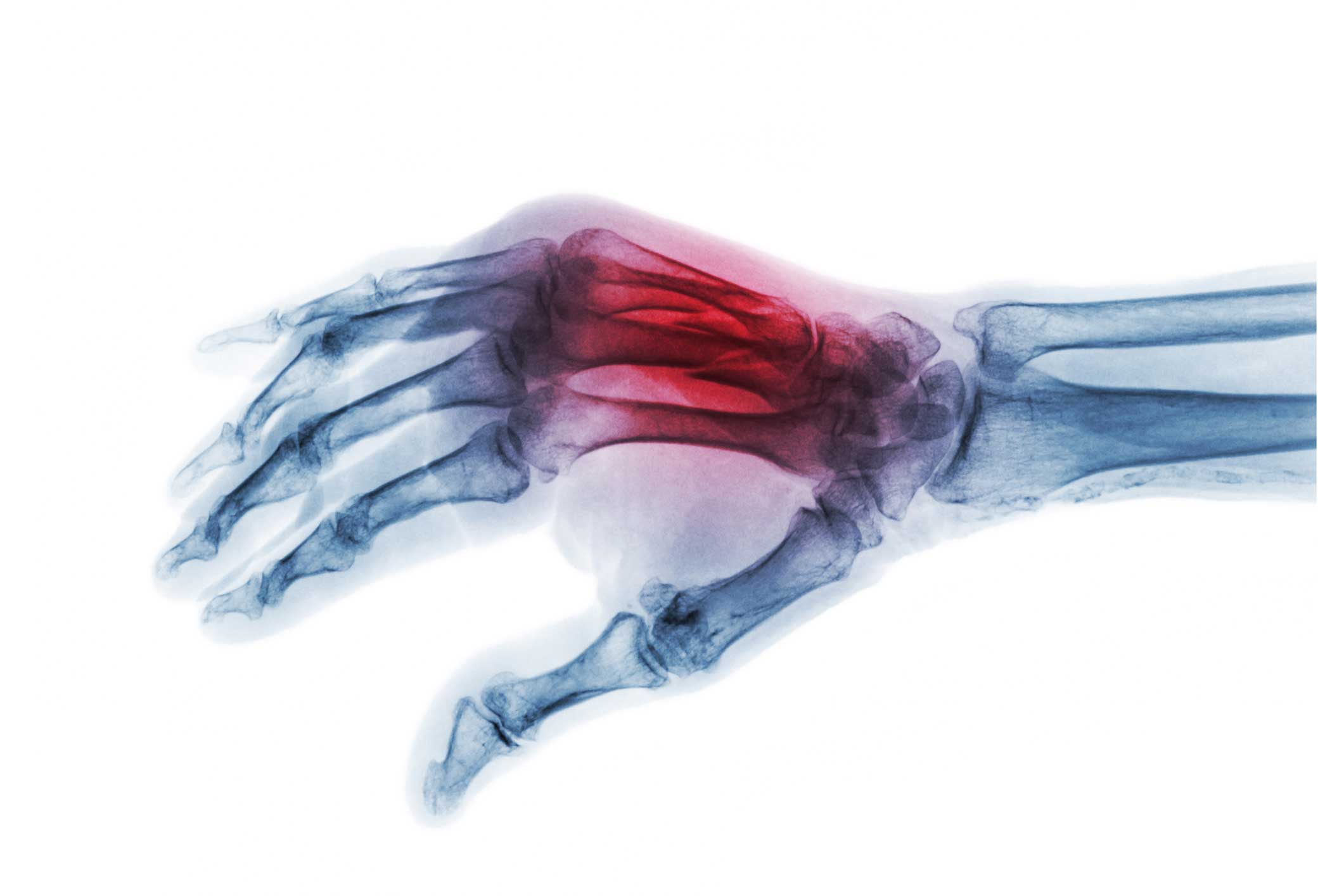Our weekly NFL report evaluates injuries to players of local (Patriots, Giants and Jets) or national interest with commentary by a sports orthopedic specialist from the Bone & Joint Institute at Hartford Hospital. Sign up for automatic delivery to your inbox (click here and scroll to “Free email newsletters”).
Player: Josh McCown, New York Jets quarterback.
Injury: Broken left hand.
How it happened: McCown’s left hand, his non-throwing hand, was hit in the third quarter of the Jets’ 23-0 loss Dec. 10 to the Denver Broncos.
Expected time missed: McCown, whose hand will require surgery, will miss the Jets’ final three games. McCown, a 38-year-old journeyman quarterback who has played for eight teams in 15 seasons, was in the midst of his best season. Entering the Broncos game, McCown had passed for 2,880 yards and 18 touchdowns, with only eight interceptions and a 96.7 quarterback rating.
Dr. Clifford Rios, Bone & Joint Institute orthopedic surgeon and board-certified in sports medicine: “The quickest return for a quarterback, I would say, would be six weeks. Unlike other positions, a QB won’t tolerate any type of brace/splint/cast on either hand, so he needs some healing before attempting to play.”
What constitutes a broken hand?: The hand has 27 bones, including the wrist. When one of these bones is fractured, it can affect the use of your hand wrist and fingers.
- Carpals: The 8 bones in the wrist, technically not part of the hand but vital to the hand’s movement.
- Metacarpals: The palm’s 5 bones.
- Phalanges: The 14 small bones that form the fingers and thumb.
A carpal fracture, usually caused by a fall braced by the hand, causes immediate pain with swelling and, eventually, bruising. The wrist is difficult to move and tender.
A metacarpal fracture, often near the knuckle in the small finger of athletes, especially boxers. (A break in the neck of the metacarpal, frequently caused by hitting something with closed fist, is often referred to as a “boxer’s fracture.”) Treatment begins with a splint that leaves room for additional swelling, with fingers exposed so they do not stiffen.
Wrist vs. Metacarpal Injury: “Someone with a simple pattern wrist fracture (extra-articular distal radius fracture) can have surgery and rapidly rehabilitate,” says Dr. Rios. “Fractures that disrupt the joint surface can take a little longer. Metacarpal fractures are problematic because no matter how they are treated (operative or nonoperative) stiffness of the band is a problem.”
A finger (phalange) fracture: This injury is grouped into three types:
- Avulsion: When ligament or tendon, and part of the accompanying bone, is separated from the main bone.
- Impacted: The ends of fractured bone driven into each other.
- Shear: A bone split by force.
The risks: Sports, motor vehicle accidents and falling onto opened hand.
Symptoms
- Severe pain that worsens with movement.
- Swelling.
- Bruising.
- Tenderness.
- Limited range of motion.
- Bent or crooked finger.
- Numbness in hand or fingers.
Diagnosis: An X-ray, description of how the injury happened and an examination of your fingers, hand and wrist will help the doctor determine the type of fracture.
If it happens to you: Call your doctor or visit an hospital emergency department. Apply ice to the injured area as soon as possible to reduce pain and swelling. Swelling may be severe, so remove any jewelry on the hand or wrist. Otherwise, it might have to be cut off if there’s a danger it will restrict blood circulation. Take acetaminophen or ibuprofen to treat pain and swelling.
Treatment: Your hand might be placed in brace, splint or cast to restrict movement. A broken finger might be secured to the adjacent finger for support. An open fracture, or compound fracture, with a break in the skin near the broken bone may require debridement, a cleaning that removes damaged and infected tissue.
“Nerve and blood vessel damage is not likely unless there is an open wound with the fracture,” says Dr. Rios. “Some may get a feeling of numbness or tingling, but that is likely just a transient nerve bruise that should resolve quickly and completely.”
Which hand injury is least likely to heal properly?: “Tough question,” says Dr. Rios, “but I would say a fracture of the joint surface of the phalanges/metacarpals.”
Do you have to worry about osteoarthritis years after a broken hand?: “No,” says Dr. Rios. “If the fracture does not affect the joint surface and the bone heals in reasonable alignment, arthritis is not such a problem down the road. Plus, we don’t walk on our hands, so any arthritis of majority of hand is well-tolerated. Look at anyone you know with knuckles that look thick — that’s arthritis — and only complaint they may have is trouble getting a ring on or off.”
Types Of Surgery
- External Fixation: Screws placed through your skin and into your broken bones. The screws are then secured to an external device that stabilizes the bones.
- Pin Fixation: Metal pins straighten and hold the pieces of broken bone in place as they heal.
- Open Reduction And Internal Fixation: Screws, a metal plate and other methods hold together your broken bones.
Dr. Clifford Rios, a sports medicine surgeon with Orthopedic Associates of Hartford, is Site Director for orthopedic resident education at the Bone & Joint Institute. Click here to find out why the Bone & Joint Institute is the athlete’s choice, with a Motion Lab for performance analysis, the area’s most comprehensive sports rehabilitation facility and 30 fellowship-trained orthopedic surgeons.


